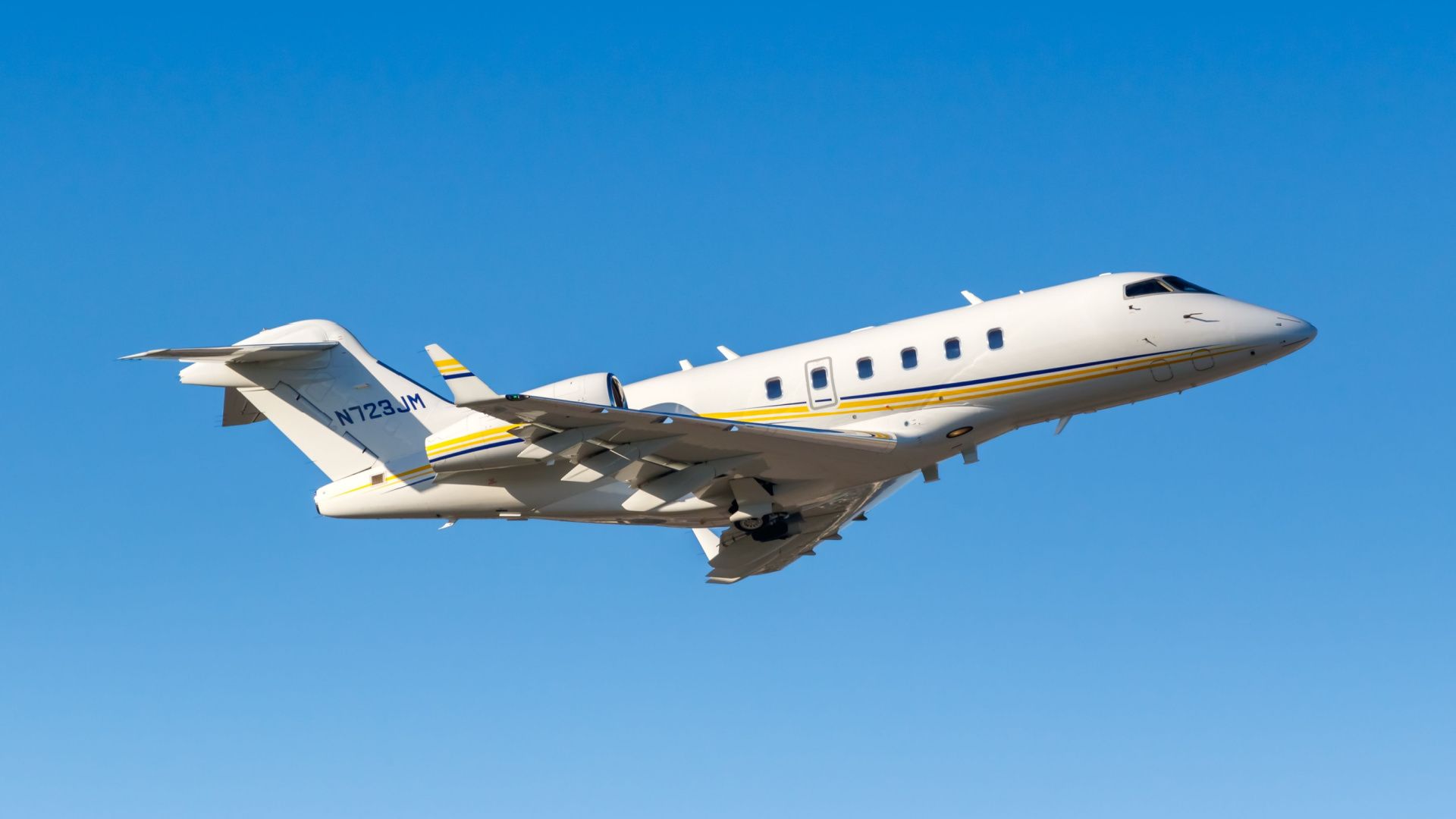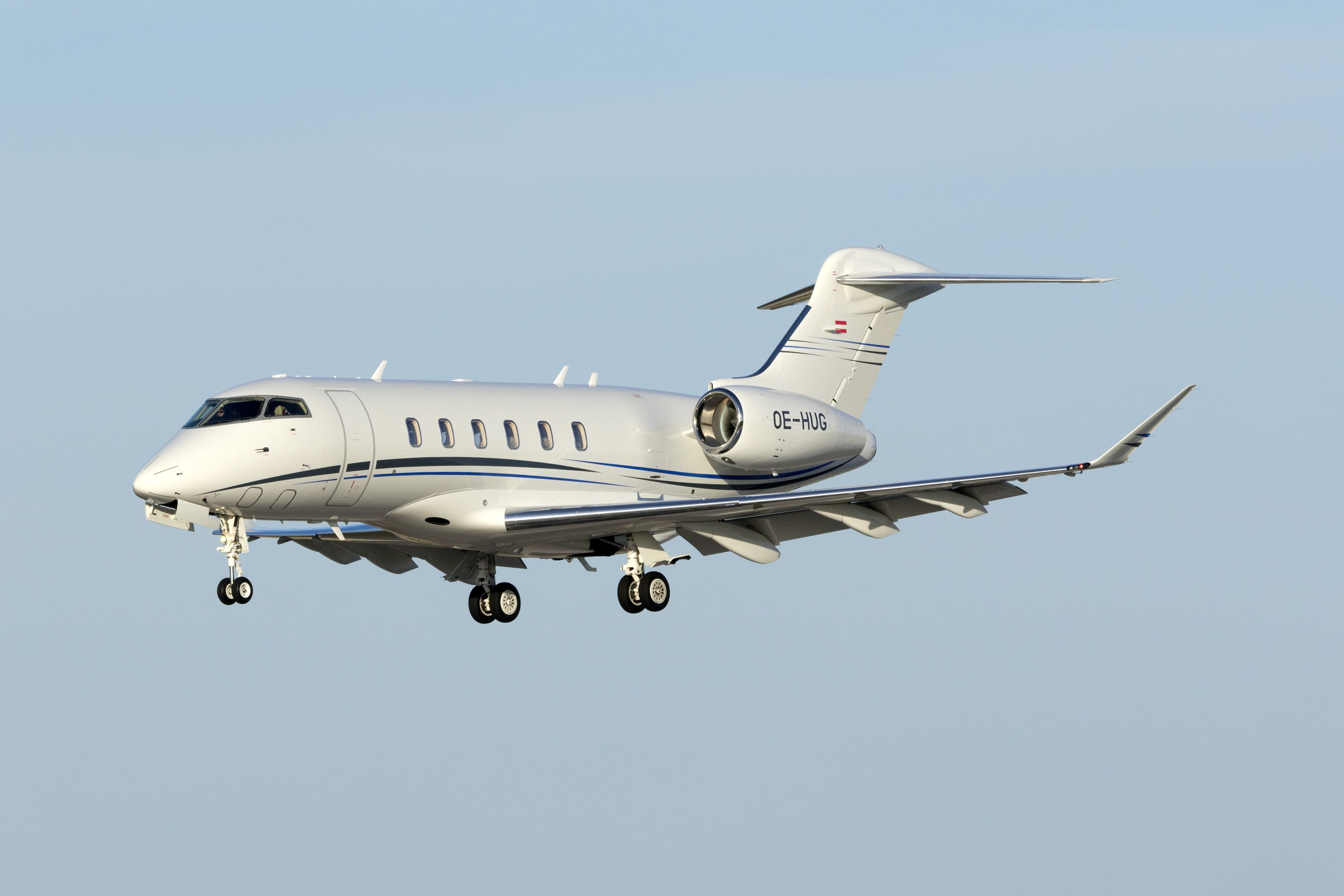On March 3, 2023, a Bombardier Challenger 300 was en route to Leesburg, Virginia, when it diverted to Bradley International Airport (BDL). The diversion resulted in a loss of life after a passenger died from injuries sustained during the flight. Initially, the fatal mishap was reported as turbulence. However, a preliminary investigation report highlighted that these initial reports were inaccurate.
A fatal crash
Manufactured in 2013, the Bombardier Challenger 300 was registered N300ER and was owned by Conexon, a company based in Kansas City, Missouri. On the flight on March 3 were two crew members and three passengers, including a former White House official during the Clinton and Obama administrations. The chartered flight was scheduled from Dillant/Hopkins Airport (EEN) in Keene, New Hampshire, to Leesburg Executive Airport (JYO) in Leesburg, Virginia.
Photo: InsectWorld | Shutterstock
This journey got off to a rocky start. After a routine preflight inspection, engine start, taxi, and takeoff were initiated. The first officer reported that during the takeoff roll on runway 2, the jet accelerated normally but noticed that the airspeed indicator on the right did not compare to the airspeed indicator on the left. As such, the flight crew aborted the takeoff and exited the runway onto the taxiway. The first officer went outside to check the aircraft and found that one of the two pitot covers was still in place, so he removed it, and the crew took off again.
The flight departed Keene at 20:34 UTC and was still climbing at 22,500 feet when it suddenly experienced an increase in its vertical climb rate and a loss of ground speed twelve minutes after departure. The aircraft’s ground speed continued to decrease until 20:45 when it reached its maximum height of 25,850 feet. It then began its descent and diversion to Windsor Locks Airport (BDL), landing 26 minutes after takeoff at 21:00.
The fatal mishap was initially reported as a turbulence-related issue. The National Transportation Safety Board (NTSB) and the Federal Aviation Administration (FAA) originally stated that the aircraft was rocked by severe turbulence, resulting in the diversion to Windsor Locks. Moreover, the accident was reported in the press as an indecent from severe turbulence.
Preliminary investigations completed
However, when the NTSB preliminary report was issued on March 24, it told a different story. According to the report, the cause of the fatal incident was not turbulence but an issue with the stabilizer trim on the Challenger 300. The report states, “The flight crew reported that they did not experience any remarkable turbulence during the flight, nor during the time immediately surrounding the in-flight upset event.”
Photo: Adomas Daunoravicius | Shutterstock
The report delves into multiple faulty crew actions to respond to faults. During the aircraft’s climb, the pilots received many EICAS (Engine Indicating and Crew Alerting System) caution warnings, including a stabilizer trim alert indicating the failure of the autopilot trim stabilizer. The flight crew then followed the correct checklist to respond to an EICAS warning, which included moving the stabilizer trim switch from primary to off. This sent the aircraft into abrupt climbs and descents with a maximum vertical acceleration of 4.2 Gs.
According to the NTSB report, the flight crew immediately regained control of the aircraft to what the pilot believed to be just a few seconds after the jet’s pitch swayed up and down. After the plane landed in Windsor Locks, the passenger who suffered severe injuries was rushed to a local hospital, where she passed away. As for the other passengers, they were not injured.
Moreover, the turbulence, which was initially reported as the cause of the incident, was nonexistent. In fact, according to the report, the flight crew stated they did not encounter any turbulence during the flight or during the time of the in-flight incident.
Source: NTSB


